Come August, gardeners like to greet each other with a joke. “Want some Zucchinis?”
Zuchinis (or zuchs for short) are generous, sprawling, and cactus-like. Their flowers stretch out, then begin to close as a tiny finger of a fruit forms at the base. The finger inflates to a forearm in the span of a sunny day or two.
If you give zuchs enough food at the beginning of the season in the form of compost or manure, they repay their debt ten fold; consistently fruiting until the first frost.
Last week we harvested 44 kilos (100 lbs) from about 20 square meters (250 square ft) of ground, less than a couple parking spaces. It’s a fairly dry year here in Prague, and we don’t irrigate, only deeply watering the hole when we set the zucchinis on their way in the middle of May.
Depending on the weather, they can be slow to get going. That makes them an excellent early season choice for inter-cropping.
The clever gardener grows in space and time. Below, we transplanted zuchs into a bed of arugula. We continued to harvest the arugula for several weeks, harvesting around the zuchs first, giving them room to stretch out.
A quick notes on the white fabric, or textile. We cover most vegetable beds from the beginning of the season till the end of May and again from middle September through the winter. I wasn’t convinced of their effectiveness until last season I covered a bed of zuchs and the last 3 couldn’t make it under. Within two weeks the ones under cover were double the size.
However, fabrics cost money, take time to manipulate, and can scorch plants if it gets above 30 C. They also must be removed often to check for mole tunneling. Moles are carnivores, they don’t eat the plant's’ roots. But their tunneling pops freshly planted starts or germinating seeds out of the ground where a warm day is enough to dry them out. We’ve lost whole beds in this way by to not checking under the cover.
By far the biggest disadvantage of the fabrics is that they don’t look nice. But they definitely speed up growth, and when you’re in the vegetable growing business in the northern part of the hemisphere, that’s how you can add whole months onto the season.
It’s like the saying goes, “there’s no solutions, only trade-offs”.
We even managed to squeeze a round of salads at the edge of the bed before the rioting began.
By always having young starts ready to go, we are harvesting 3-5 crops out of each bed each growing season. If a bed is harvested out, something is planted or seeded the same day. This is how we can grow enough food for 25 families on a quarter acre of land.
Each year inevitably some zuchs go full on Icarus, reaching for the sun, until the weight of their fruits breaks the stem. Remarkably, they can still keep producing for a week of two, until the wound begins to rot and the plant dies back. You could probably prevent this by supporting the plant with a log or rock.
As far as pests go, slugs have a particular taste for young cucurbits (along with pumpkins and cucumbers). I’ve found that growing zucchini starts under cover (greenhouse, row tunnel) until the fuzz turns to little thorns on their stem, and waiting until the soil is warm, makes for a much a healthier plant that establishes faster and therefore has less appealing to slugs. Slugs are de-composers. They’re attracted to weak plants. We’ve noticed a huge drop in slug pressure the last two seasons. They’re still there, but since we’ve greatly increased the fertility and biology of the soil, the veggies are, to some extent, able to defend themselves. When a plague comes, we release the ducks and I also patrol at night with a headlamp and scissors. More on how to deal with slugs to come.
The fruit on the right is ripening into a pointed zuch, pale at the point. I’ve found it’s always best to harvest these right away. The pointed ends tend to get soft and rot quickly if left to mature. Smaller zuchs taste better anyway. It could be the varieties I’ve grown, but it seems that the yellows always grow slower than the greens, but they are denser and have more flavor.
It’s always best to harvest with a knife. Twisting the zuchs can break-off the stem. That’s fine if you eat it right away, but they won’t store. Same goes for pumpkins. I think it’s also safer for the plant to make a clean cut at the stem. It’s less likely to attract fungi.
Franz, an Italian/Albanian friend, told me that in Italy they have species of zucchini that are bred to grow large flowers and small fruits. The flowers are picked, battered, and fried, like a schnitzel. Franz can turn a can of beans into a delicacy, so I’ll wait for his visit next month to try this.
We started a few no-dig beds for pumpkins and zucchinis on a piece of meadow next to the main garden. In our experience, potatoes and squash are the best crops for starting new beds. They can produce a yield even in rougher conditions. Their vigor, once established, means they can compete and suppress weeds, and the copious amounts of mulch we lay down means that the next season we have a nicely prepared, fertile growing area for other crops.
The above photo shows two ways of starting no-dig beds on meadow. The one on the right is a truckload of horse manure with about 4 wheelbarrows of compost. Make a hole in the compost, water well and planted the zuch. The bed on the left, I laid down cardboard to keep the weeds back and then added about 4 wheelbarrows of compost. I would’ve done better to put 8.
The chickshaw with the chickens hard at work in the background and the bees doing their thing on the back of the meadow.
Zuchs are prolific plants. This is a shot about a month and a half later. I actually had to pull 3 full-sized plants because I was counting on the fact we would lose some starts to slugs. They all made it and were therefore way too close, competing for water so the fruits were small. After thinning, they’re cropping superbly. The fence is a trellis for cucumbers who didn’t do very well. I think mostly due to our micro-climate in the valley. They prefer warm and moist conditions. I’ll keep trying different varieties until I find one that doesn’t mind our cool nights in the Prokopská Valley.
Zucchinis are one of the most generous and forgiving vegetables on the farm. Poke some seeds in fertile soil, throw some mulch around it and come August you you’ll be in on the joke.
But really, joking aside. Want some zucchinis?




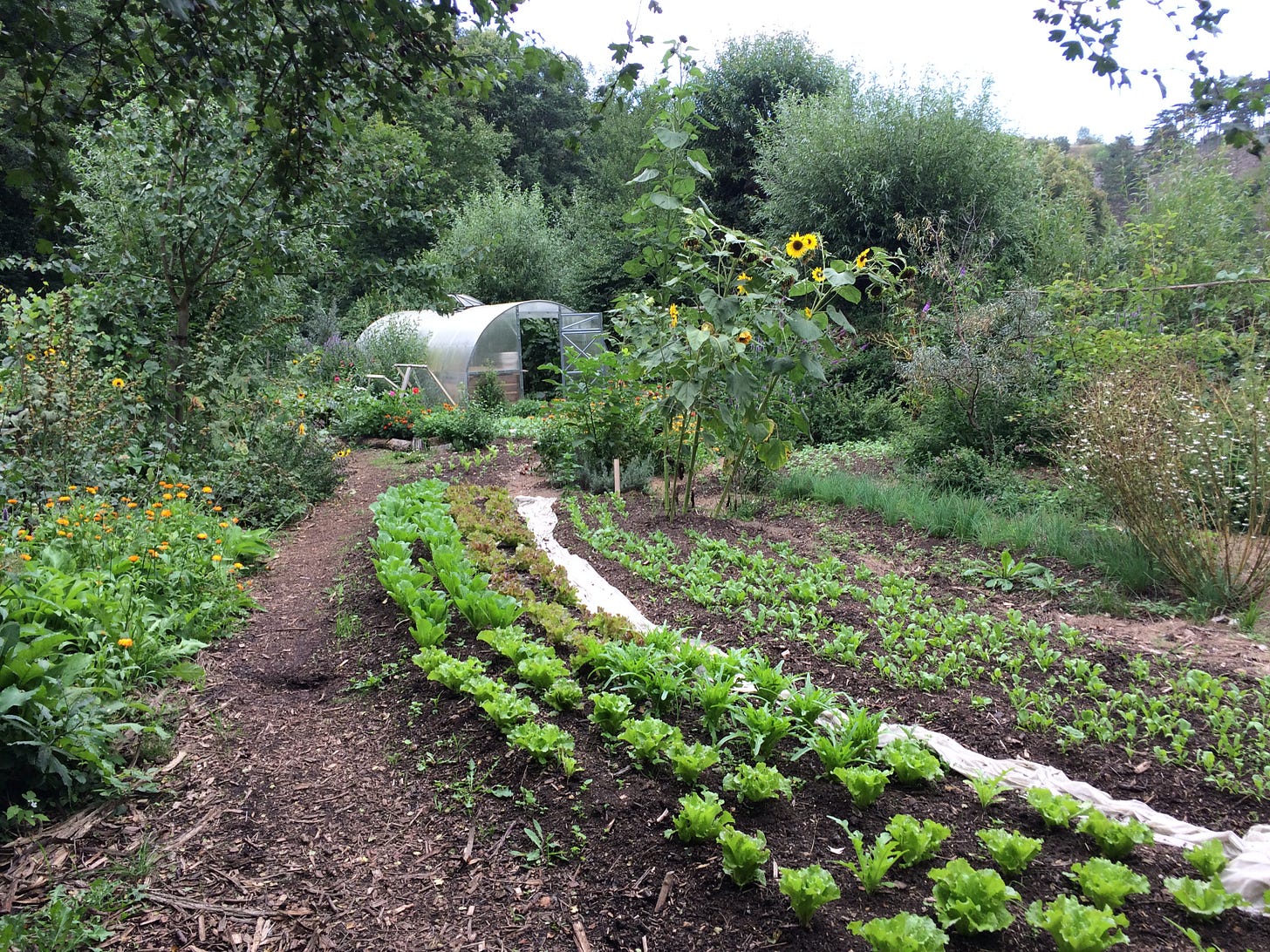
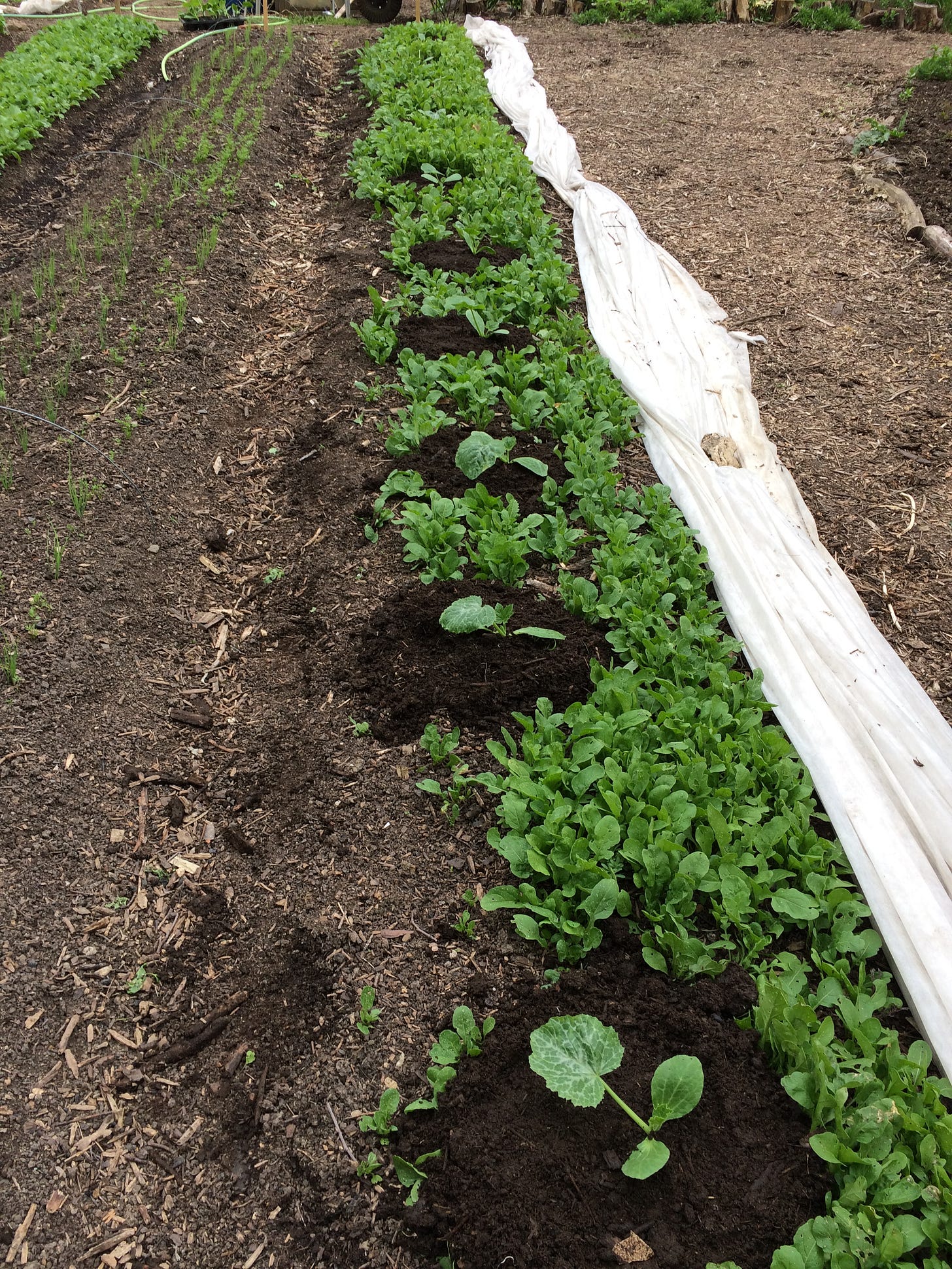


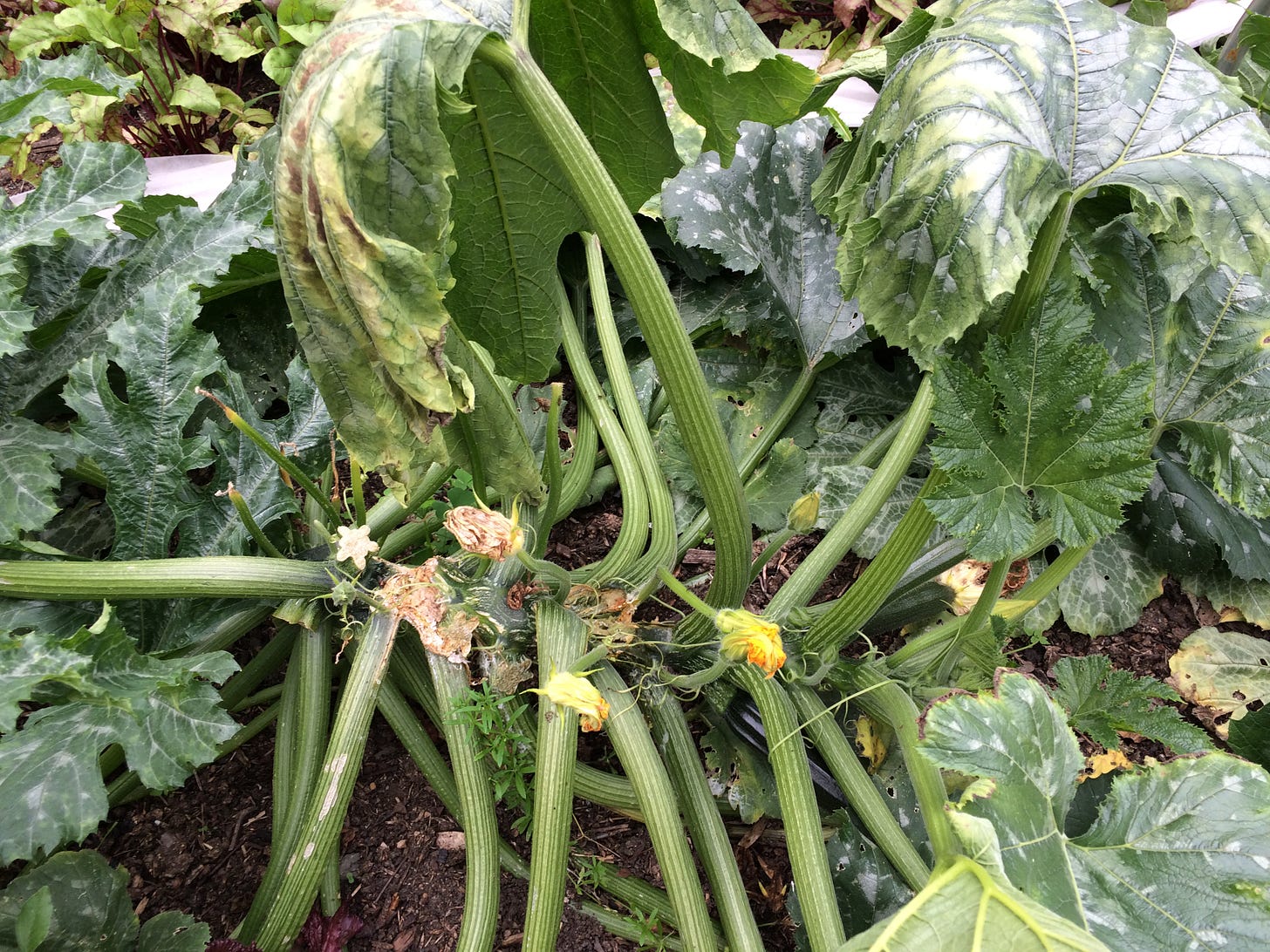
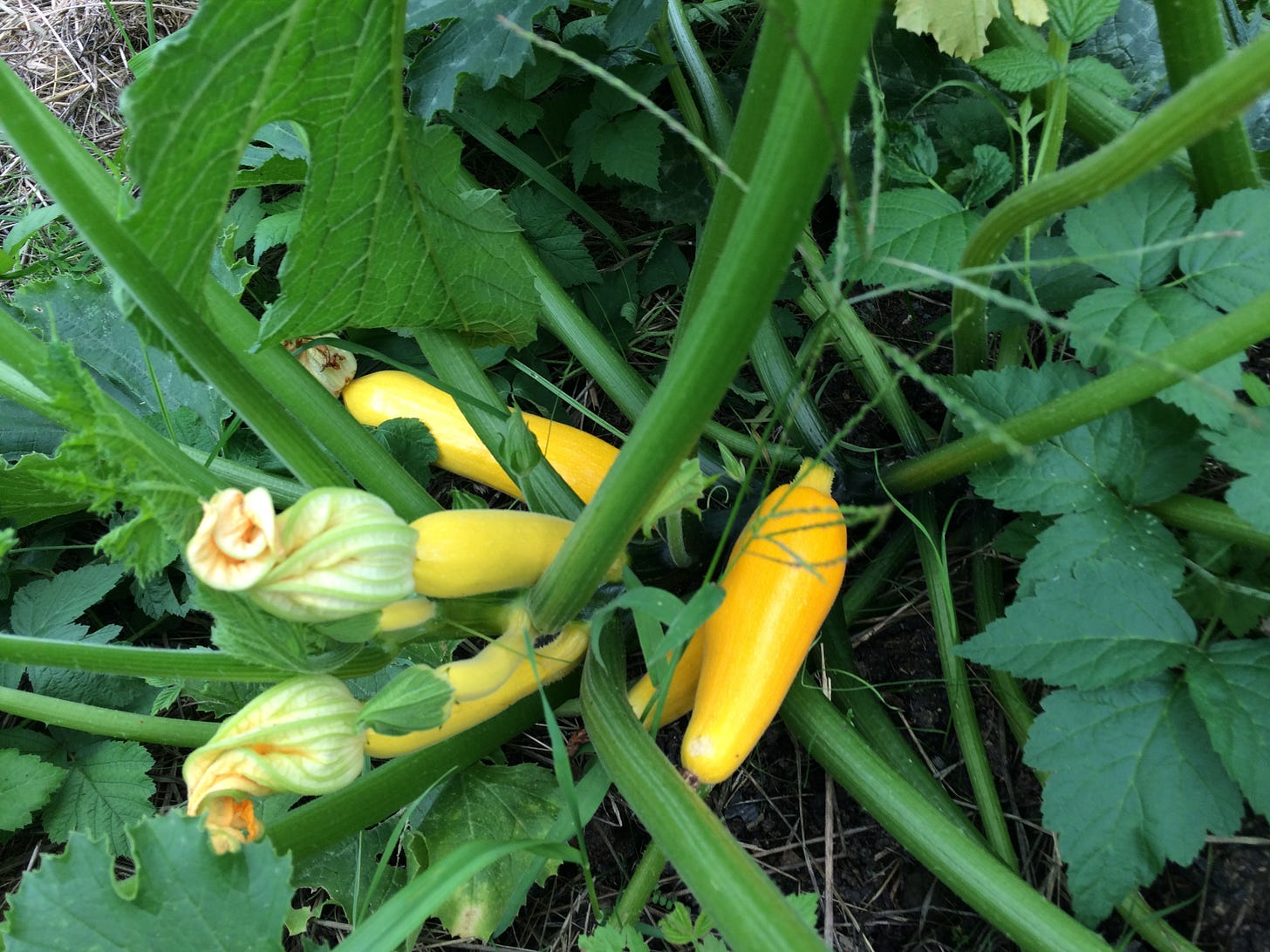

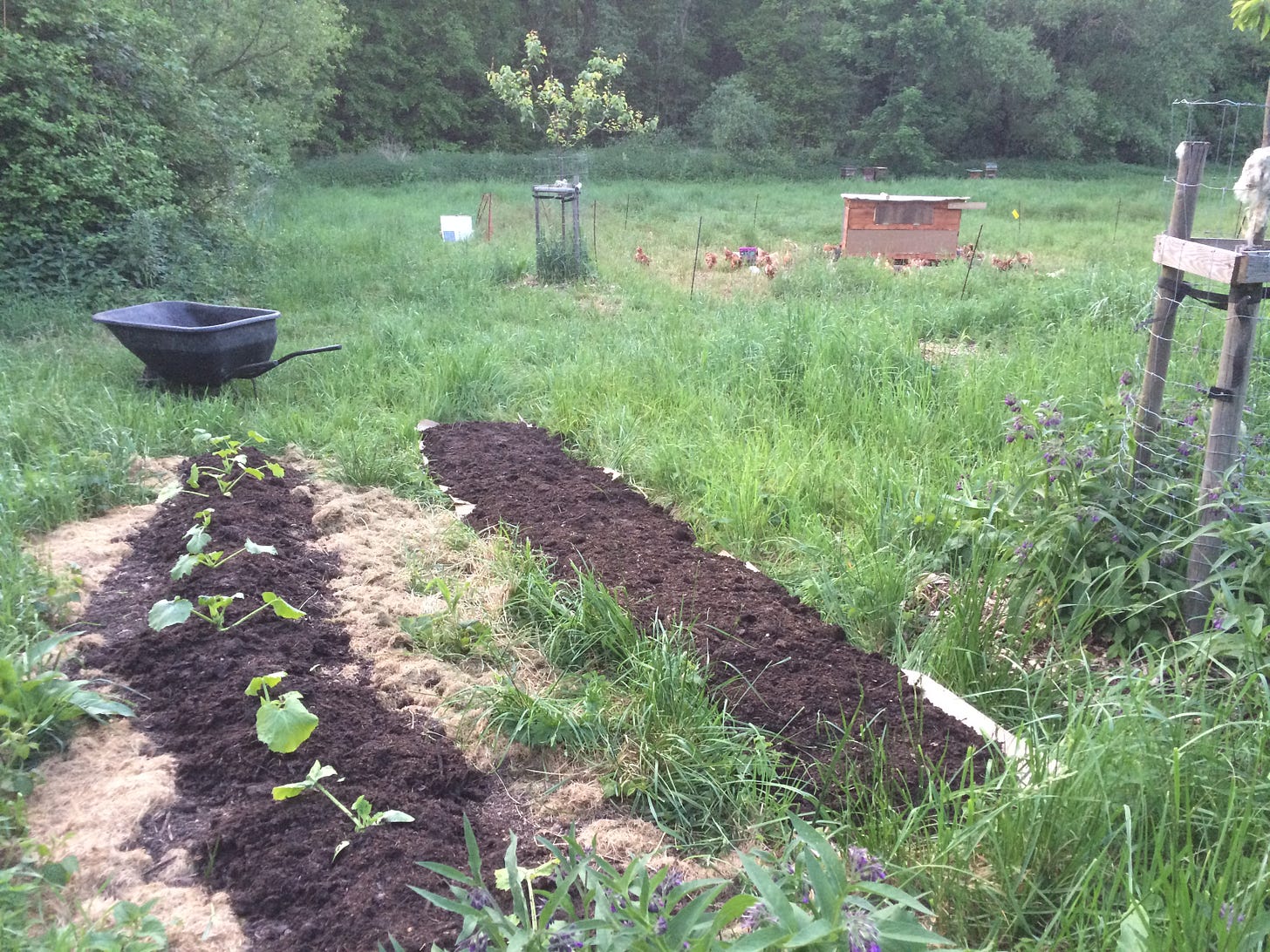

I never thought I'd find the topic of zucchini interesting. I was proved wrong.